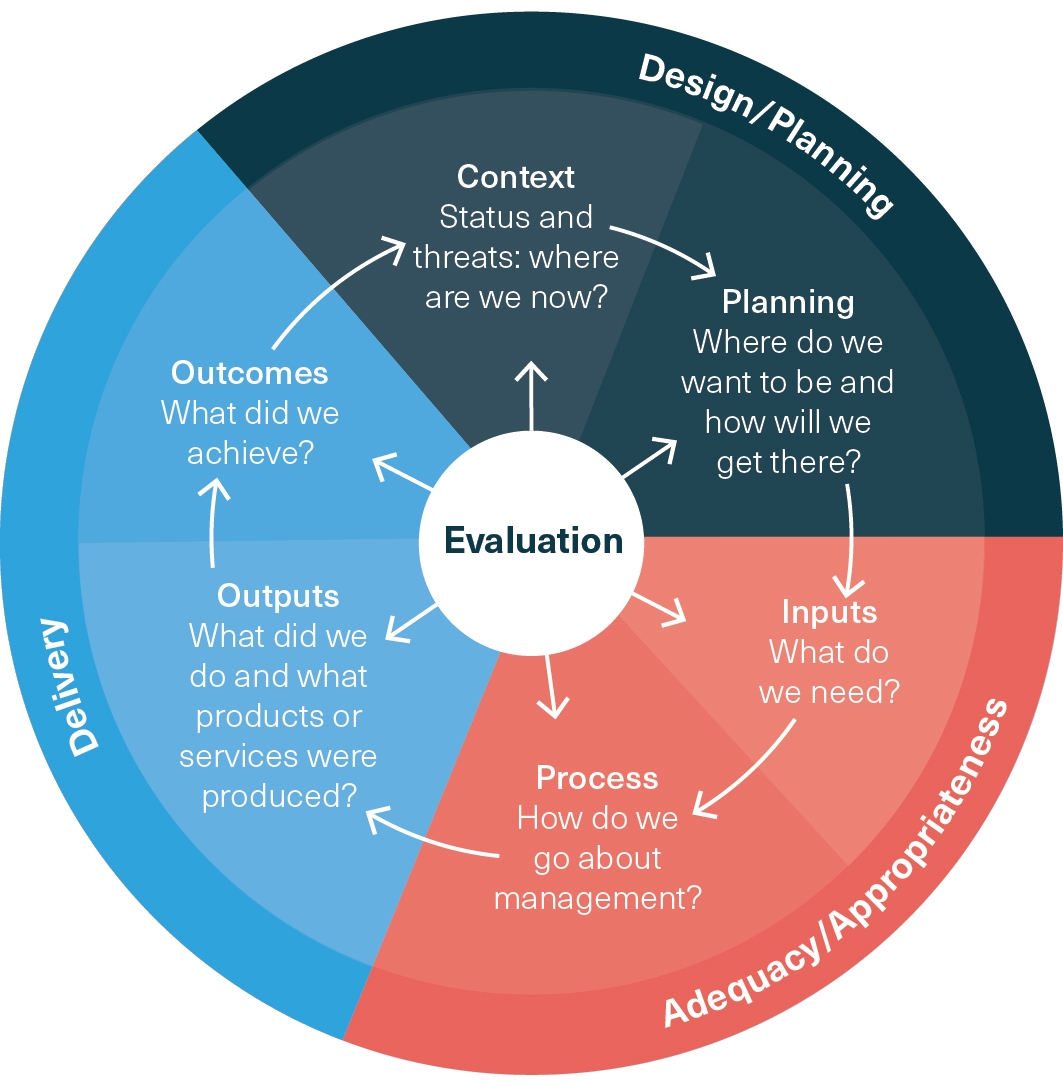The International Union for the Conservation of Nature and Natural Resources’ (IUCN) framework for assessing management effectiveness of protected areas 1966 was applied in the assessment. This framework is based on a management cycle in which management is continuously evaluated and refined (Figure 7.2).
Figure 7.2
Framework for assessing management effectiveness of protected areas
Effective management is a closed loop where issues are considered, plans are made, resources are expanded, processes are followed and products and services are delivered, all leading to outcomes that address the issues.1966

The assessment was based on the six elements of the management framework:
- Understanding context
- Planning
- Financial, staffing and information inputs
- Management systems, processes and governance
- Delivery of outputs
- Achievement of outcomes
The independent assessment addresses the six elements of the management cycle
These six elements of the IUCN framework were examined for each of the 14 management topics (Section 7.1.2). The independent assessors considered evidence, including that provided by managing agencies, against 49 indicators (Appendix 5). To determine the effectiveness for a specific management topic, ratings for the indicators within each topic were added and scaled to provide a total score. These scores were then associated with a grade ranging from effective to ineffective.
The independent assessors provided a summary of effectiveness for three broad management approaches:
- Environmental regulation
- Engagement and knowledge
- Integration and innovation


